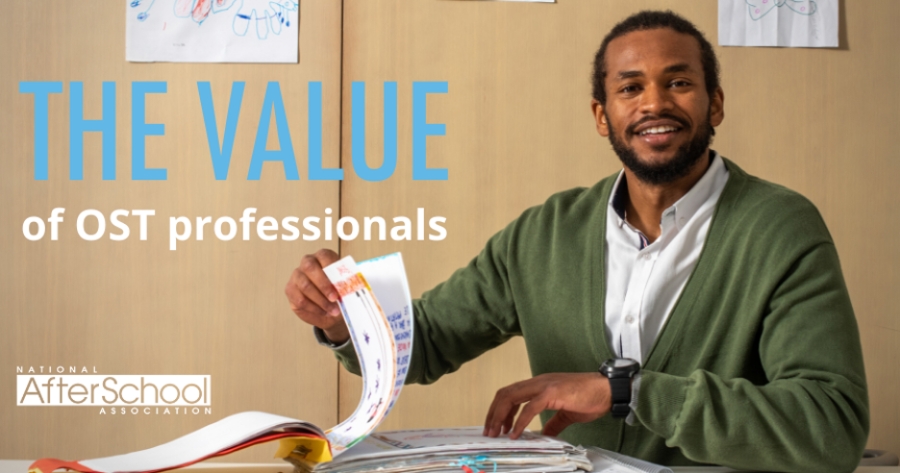In 2018, The National AfterSchool Association, in coordination with Dr. Melissa Pearman Fenton, articulated the connection between OST professionals, quality programs, and youth outcomes. The Growing Out-of-School Time Field, Past, Present, and Future book chapter states:
“Researchers in the field support out-of-school time (OST) professionals as a key factor to quality programs that produce positive youth outcomes (Larson, Rickman, Gibbons, & Walker, 2009; Little, 2004). Mahoney and Warner (2014) identified staff knowledge and competence as foundational ideas contributing to program quality. Staff contributions providing youth with ‘safe, supportive relationships and a positive emotional climate’ (Palmer, Anderson, & Sabatelli, 2009, p. 8) appear in eight quality frameworks for OST. Strong staff–youth relationships correlated to academic engagement and future aspirations in Huang and colleagues’ (2007) study of LA’s BEST OST program. The research supports that OST professionals are an important contributor to program quality and youth outcomes (Russell, Mielke, & Reisner, 2009).“
This chapter introduction shows the quality connection progression and includes research citations, easily found through an internet search using the research title or author names below:
- Granger, R. C., (2008). After-school programs and academics: Implications for policy, practice, and research. Social Policy Report, 22(2), 3-19.
- Harvard Family Research Project. (2008, February). After school programs in the 21st century: Their potential and what it takes to achieve it (Executive Summary No. 10). Cambridge, MA: Author.
- Huang, D., Coordt, A., La Torre, D., Leon, S., Miyoshi, J., Perez, P., & Peterson, C. (2007). The afterschool hours: Examining the relationship between afterschool staff-based social capital and student engagement in LA’s BEST. (CSE Technical Report No. 712). Los Angeles, CA: University of California.
- Larson, R. W., Rickman, A. N., Gibbons, C. M., & Walker, K. C. (2009). Practitioner expertise: Creating quality within the daily tumble of events in youth settings. New Directions for Youth Development, 2009(121), 71-88. doi: 10.1002/yd.297
- Little, P.M. (2004). A recipe for quality out-of-school time programs. The Evaluation Exchange, 10(1), 18-19.
- Mahoney, J. L., & Warner, G. (2014). Issue editors’ notes. New Directions for Youth Development, 2014(144), 1-10. doi: 10.1002.yd.20108
- Palmer, K. L., Anderson, S. A., & Sabatelli, R. N. (2009). How is the afterschool field defining program quality? A review of effective program practices and definitions of program quality. Afterschool Matters, 9, 1-12.
- Pierce, K. M., Hamm, J. V., & Vandell, D. L. (1999). Experiences in after-school programs and children’s adjustment in first-grade classrooms. Child Development, 70(3), 756-767.
- Posner, J. K., & Vandell, D. L. (1994). Low-income children’s after-school care: Are there beneficial effects of after-school programs? Child Development, 65(2), 440-456.
- Russell, C. A., Mielke, M. B., & Reisner, E. R. (2009). Evidence of Program Quality and Youth Outcomes in the DYCD Out-of-School Time Initiative: Report on the Initiative's First Three Years. Policy Studies Associates, Inc.
- Vandell, D. L., Reisner, E. R., & Pierce, K. M. (2007). Outcomes linked to high-quality afterschool programs: Longitudinal findings from the study of promising afterschool programs (Report to the Charles Steward Mott Foundation). Irvine, CA: University of California, Irvine.

